When it comes to visiting Vegas, most people automatically think of casinos, shows, and the strip. What most people don’t realize is just how many amazing outdoor spaces are best accessed from Sin City!
After visiting National Parks such as Arches and Joshua Tree, I quickly came to the conclusion that I love the desert. It’s the complete opposite of my typical day-to-day in Alaska, and arid areas like these parks make for great destinations during the shoulder seasons. With that in mind, Death Valley felt like the perfect place to spend spring break. And the nearest airport? VEGAS! While Death Valley was the original inspiration, as I started mapping out the trip I quickly realized that there was so much more in the area than I’d ever realized!
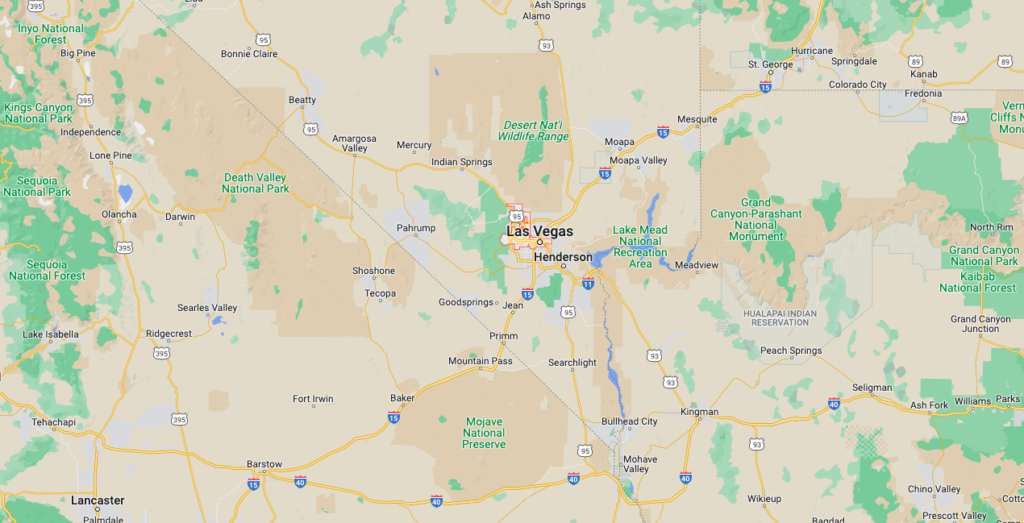

- Day 1: Death Valley
- Dante’s View
- 20 Mule Team Canyon
- Zabriskie Point
- Artist’s Palette
- Badwater Basin
- Panamint
- Day 2: Death Valley
- Darwin Falls
- Father Crowley Vista Point
- Charcoal Kilns
- Mesquite Flat Sand Dunes
- Ubehebe Crater
- Day 3: Valley of Fire State Park
- Beehive Rock
- Elephant Rock
- Historic Cabins
- White Domes Trail
- Fire Wave
- Seven Wonders Loop
- Day 4: Red Rock Canyon National Conservation Area
- Calico Tank Hike
- La Madre Springs
- Pine Creek Canyon Trail
DAY 1: Death Valley
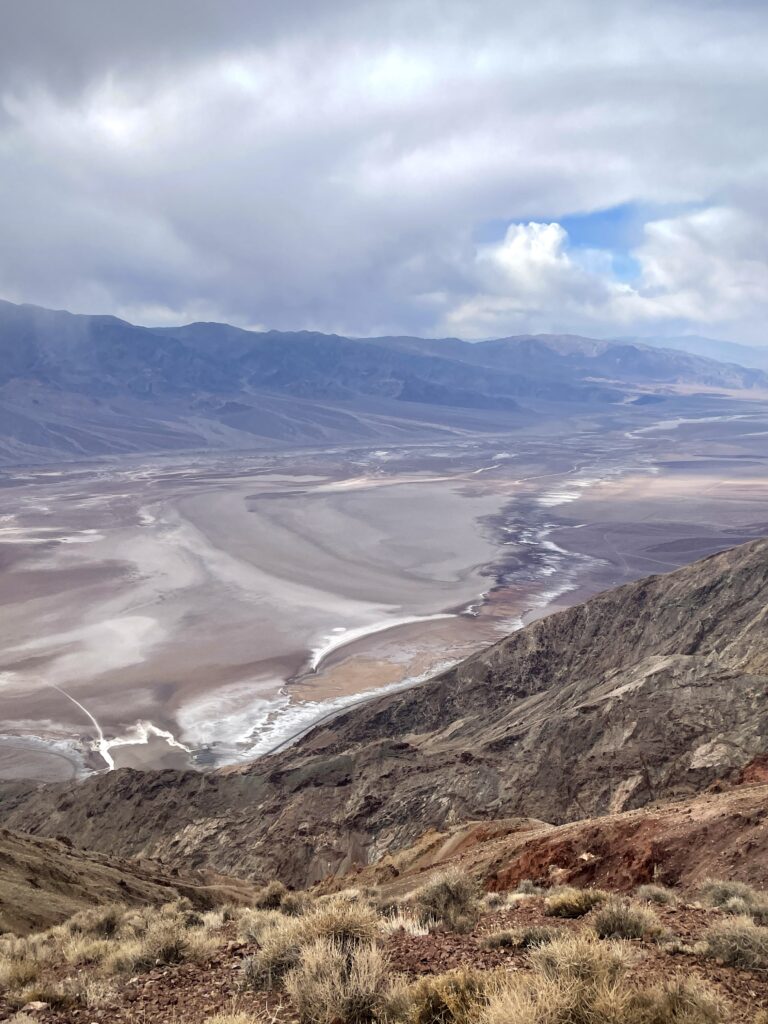
Dante’s View, 20 Mule Team Canyon, Zabriskie Point, Artist’s Palette, Badwater Basin, Panamint
Our journey started with flights into Las Vegas’s McCarran Airport on a Friday night in March. We picked up our rental car, then made our way to a nearby AirBNB for the night. The next morning we hit the road! Death Valley is only about 2 hours west of Las Vegas, but we made time for a quick stop in Pahrump for breakfast at the winery.
Once we arrived at the Death Valley entrance, we immediately made our way to Dante’s view and took a little walk around. Dante’s view is absolutely gorgeous, giving you a bird’s eye perspective of the valley and unique geologic formations below. It was windy and a bit cold, so we broke out our puffies before heading out along the ridge for some slight change in scenery!
After our short hike we hopped back in the car and headed deeper into the park. There is a lot of mining history in Death Valley, and our next stop was 20 Mule Team Canyon, which historically was a popular location due to the presence of Borax. It was also used as a filming site for the Star Wars film Return of the Jedi. We honestly only saw a few other cars driving through, and it was such an interesting spot to wander around! Even though it seems like a less popular stop, we really enjoyed the scenery and having it more or less to ourselves felt like an added bonus.
Next up, however, was the very popular Zabriskie Point. Much more crowded, but still amazing geologic formations and views. We stuck to the concrete viewpoint walkway, but as we watched a few people take off on longer hikes and walk along the dried out riverbed below we knew that this was a place we’d like to come back and revisit someday!
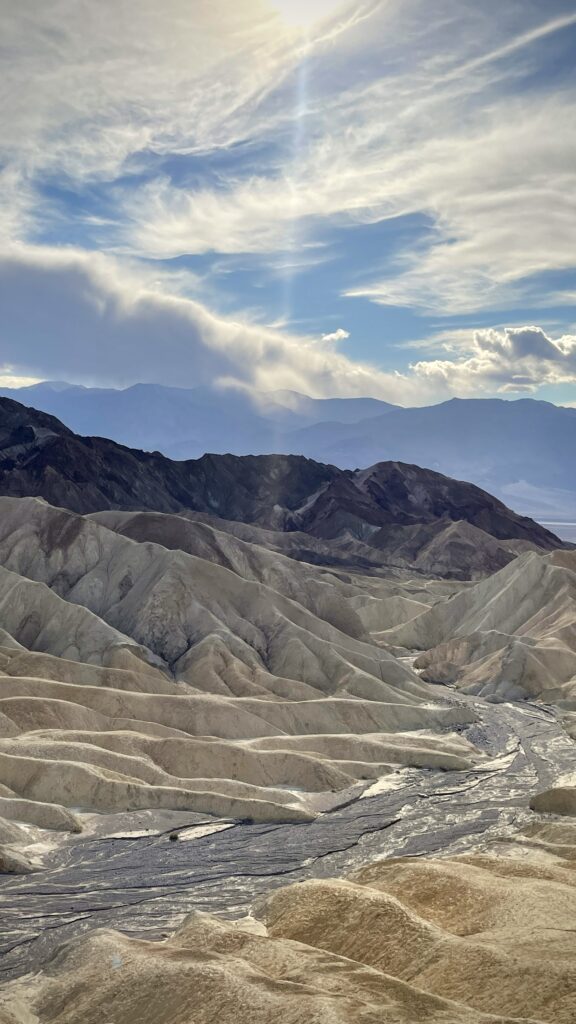
After our stop at Zabriskie Point we headed to Artist’s Palette. It’s very typical so see pictures of people walking along the trails the leave the popular parking lot, but the whole loop drive was absolutely stunning! The colors are gorgeous and it’s well worth it to spend some time wandering around, taking it all in.
Our final stop for the day was Badwater Basin, the lowest point in North America. When you first arrive to Badwater Basin, you’ll notice a marker on the wall of rocks looming above the parking lot, showing where sea level would be. We timed it just right to arrive at sunset and the atmosphere was stunning. In order to see the popular hexagonal salt flat patterns you have to walk out a ways, and we enjoyed every second of it. Lots of people were setting up their photography gear (Death Valley is a popular nighttime photography destination) and it was a great way to end the first day!
Once we were done exploring the salt flats, we popped into the car and headed toward our final destination for the night: a cabin in Panamint Springs. Stovepipe Wells was the nearest map dot, so we figured we would for stop in to refuel and grab dinner. And by map dot I mean there is are all of four buildings: a ranger station, gas station/convenience store, saloon, and a tiny hotel.
We wandered into the saloon and were super lucky to get food. After we ordered food the guy behind us got his order in and then they promptly announced the kitchen was closed for the night! There were quite a few people who wandered in afterward and were out of luck, so keep this in mind if you’ve got sunset schemes. Once we had finished our food we made our way to Panamint Springs, which was even smaller than Stovepipe Wells. The entire area of Panamint Springs consists of the restaurant, a gas station, and the rental cabins we stayed in.
Darwin Falls, Father Crowley Vista Point, Charcoal Kilns, Mesquite Flat Sand Dunes, Ubehebe Crater
DAY 2: Death Valley
The next morning our day started with breakfast in Panamint and a hike not far from our cabin. Just beyond the area of Panamint is a rough road that leads to a parking lot for Darwin Falls, a spring smack-dab in the middle of the desert. We really enjoyed the hike and marveled at the progression of greenery and little oasis amidst such an otherwise barren landscape. The hike was only 2 miles roundtrip and a great way to start the day before quite a bit of driving.
After hiking, our next stop was Father Crowley Vista Point. The vista point is stunning, and the furthest West that we traveled in the park. Even though it was the opposite direction of most of the other sights for the day, we felt like the stop was well worth it!
Once we were done taking in the views, we headed back past the road to Darwin Falls and through Panamint Springs to Emigrant Canyon Road, which connected to Wildrose Canyon Road, ultimately bringing us to the Wildrose Charcoal Kilns. The kilns are beehive shaped structures lined up along the side of the road and were built in 1877 by the Modock Consolidated Mining Company to create charcoal for fueling silver and lead smelting processes nearby. The kilns are in a really beautiful spot and look neat all lined up in a row. We enjoyed a few quiet minutes meandering amongst the kilns before heading towards the Mesquite Sand Dunes.
Personally, I’m not a big sand person. The Mesquite Sand Dunes were cool to see, but not something I felt I needed to spend a lot of time at. Walking through sand is a bit of a slow slog, and I was having flashbacks to my trip to Indiana Dunes National Park the whole time. We walked out a little ways to try to avoid some of the crowds but ultimately it was a quick stop.
At this point we had a very small window of daylight left to us, and after a quick bout of hemming and hawing we made a split second decision to hail mary it out to Ubehebe Crater! It took us about an hour to get out there, but the drive was really pretty and we made our way to just in time for sunset! The best part? We had the whole place to ourselves! It made for a really late drive back into Vegas, but we didn’t mind.
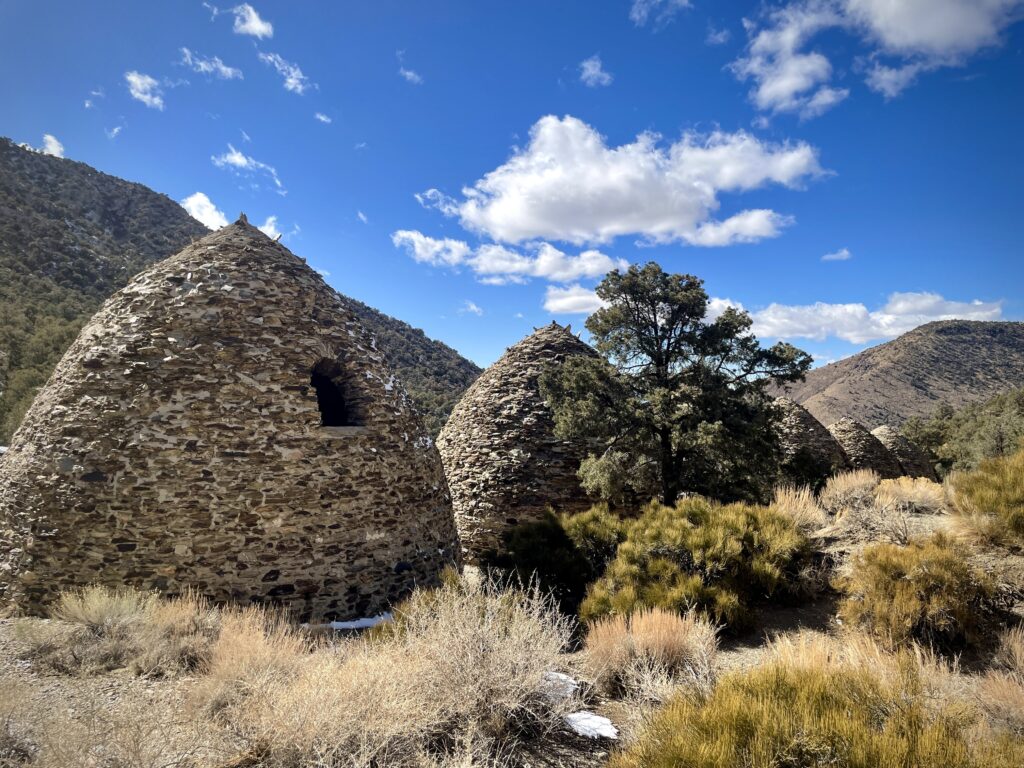
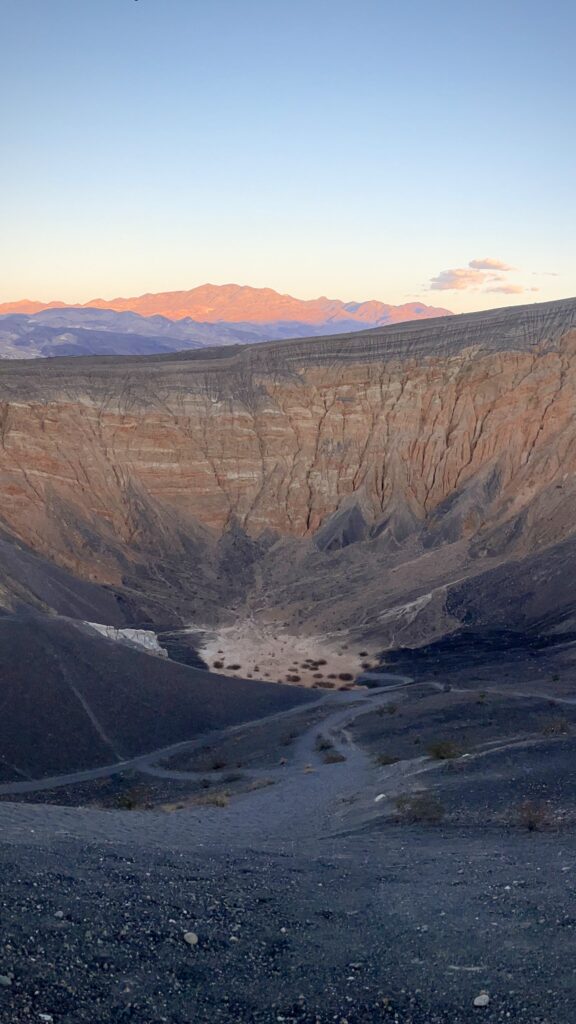
DAY 3: Valley of Fire State Park
Beehive Rock, Elephant Rock, Historic Cabins, White Domes Trail, Fire Wave & Seven Wonders Loop
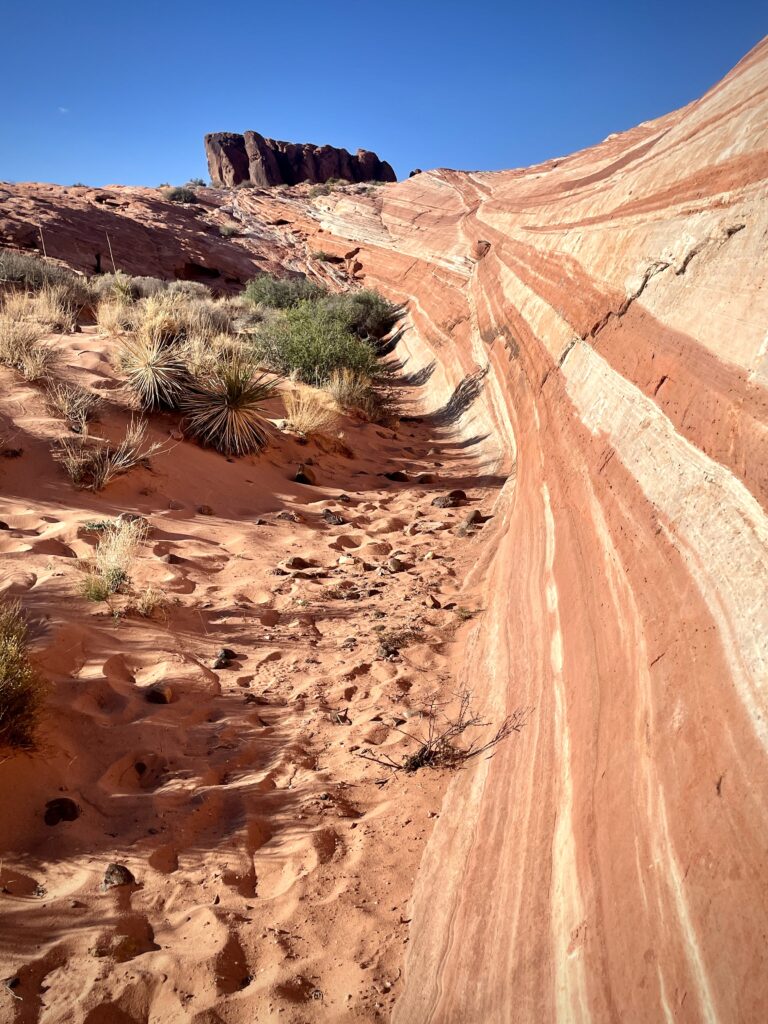
Unfortunately my travel buddy couldn’t stay for the entire four days, so the rest of my time in Vegas was spent solo. My next outdoorsy area to explore was Valley of Fire State Park, and I absolutely loved it!
My first stop was beehive rock, which is easily visible from the road as soon as you enter the park’s west entrance. My next stop was also a fun geologic structure: Elephant Rock. The road system in the part is an upside down T, so I figured I would cross a few sights at the east end of the park off my list, before making my way back to the intersection and ending with the northern sights.
Elephant rock is a fun sight, and the loop hike it’s located on is a quick 1.25 mile loop. You can also take a quick quarter mile walk from the parking lot if you’d rather just skip to Elephant Rock, but after the hour drive from Vegas and driving the width of the park I wanted a little leg stretch.
I then made my way back west, with a quick stop at the historic cabins and visitor center to refill my water before heading to the northern end of the park. This was easily my favorite section!
My first hike in the north portion of the park was through the White Domes Trail, which is a 1.1 mile loop. I then made my way to the Fire Wave & Seven Wonders Loop, which was 2.3 miles. Both were absolutely stunning with barely any elevation gain, and the second one was fairly empty. I think a lot of people hike just to the wave and back to the parking lot, so I had most of the rest of the loop to myself.
My final stop was Atlatl Rock and Arch Rock, before heading back to Vegas.
DAY 4: Red Rock Canyon National Conservation Area
Calico Tank Hike, La Madre Springs, Pine Creek Canyon Trail
The final stop of my trip was Red Rock Canyon National Conservation Area, which requires a bit more logistical planning than any of the other stops. Timed entry reservations are required between October and May, and reservations can be made online or over the phone. Once you’ve made it to the Red Rock Canyon gate, there is one-way, 13 mile loop road that you drive to reach various stops within the conservation area, with the visitor center pretty close to the entrance.
After a quick little stop at the visitor center for snacks and water (not available anywhere else along the route) I made my way to the Calico Tank Trail. This hike was a little more challenging than I was expecting, but still manageable and the little climb at the end for the view of Las Vegas in the distance was awesome!
Hike two for the day was La Madre Springs. Of the three, this one was probably the least exciting. The valley was pretty, but it didn’t feel like anything you didn’t already see elsewhere, and the spring was pretty underwhelming. If I were pressed for time and only got to choose two, this is probably the one I would leave off the itinerary.
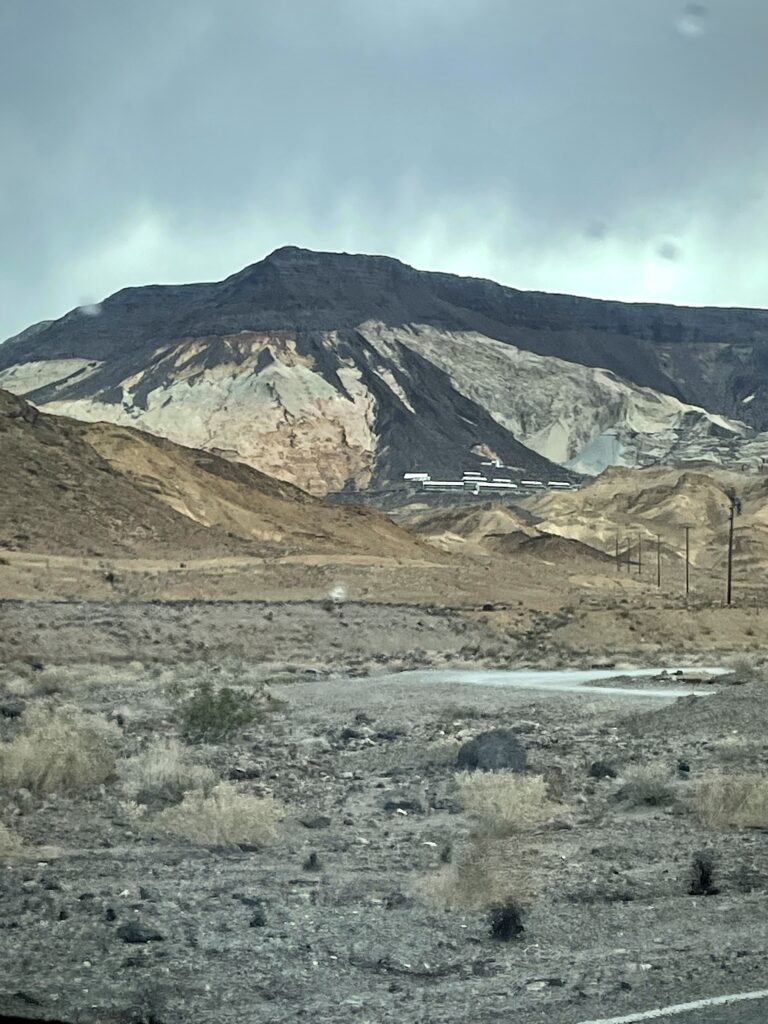
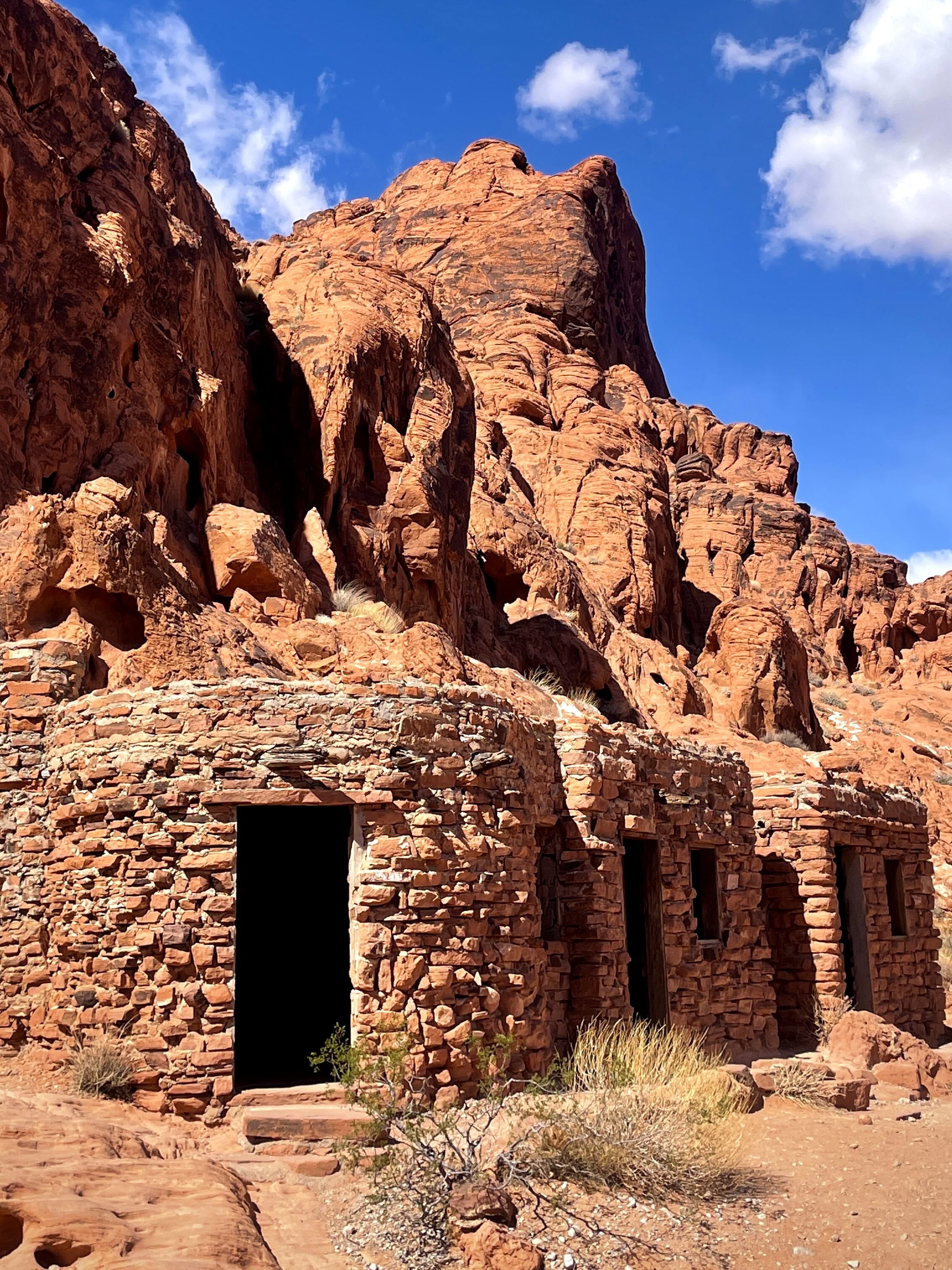
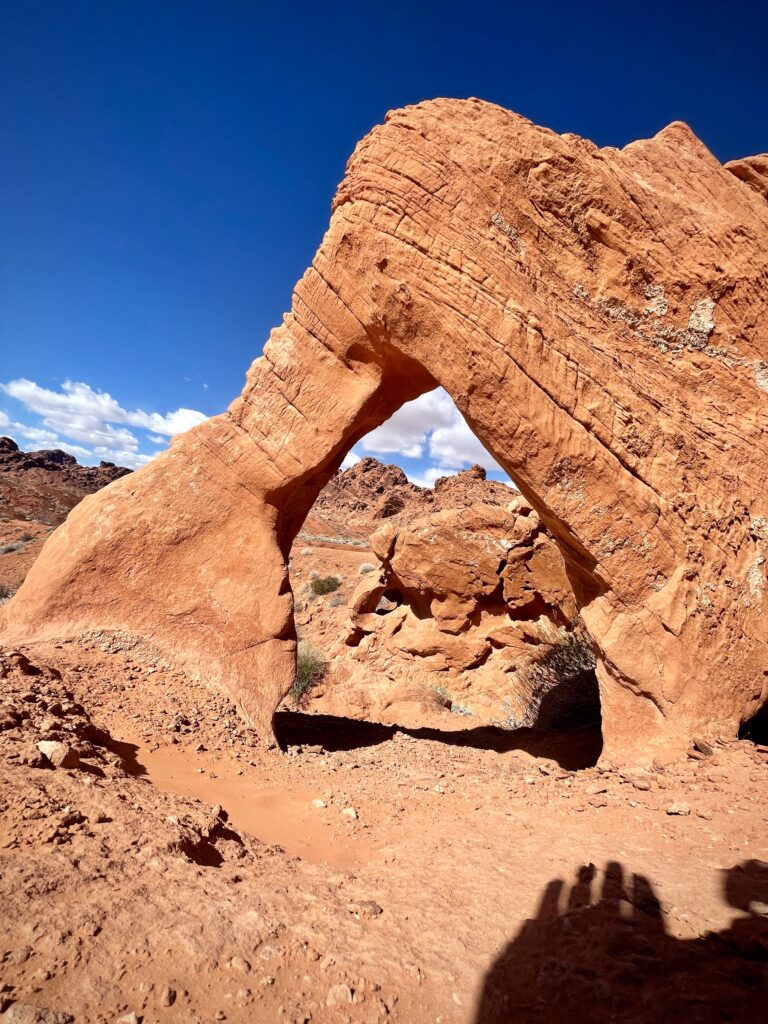
This trip was so much fun, and as far as timing goes March felt like the perfect time to not only escape Alaska, but also get out and about in the desert before summer temperatures hit! I’ve already got a few ideas in the works for future spring trips, and can’t wait to see where the next visit to Vegas takes me! A little time in Vegas, a little time wandering in the desert, it’s the best of both worlds!

If you’re interested in checking out other outdoor areas near Vegas, here are a few options:
Beaver Dam Wash National Conservation Area • 2 hours northeast
Clark County Wetlands Park • 20 minutes east
Dead Mountains Wilderness Area • 1 1/2 hours southeast
Desert National Wildlife Range • 2 hours north
Grand Canyon National Park • 4 hours east
Havasu National Wildlife Refuge • 2 hours south
Lake Mead National Recreation Area • 30 minutes east
Mojave National Preserve • 1 hour southwest
Sloan Canyon National Conservation Area • 30 minutes south
